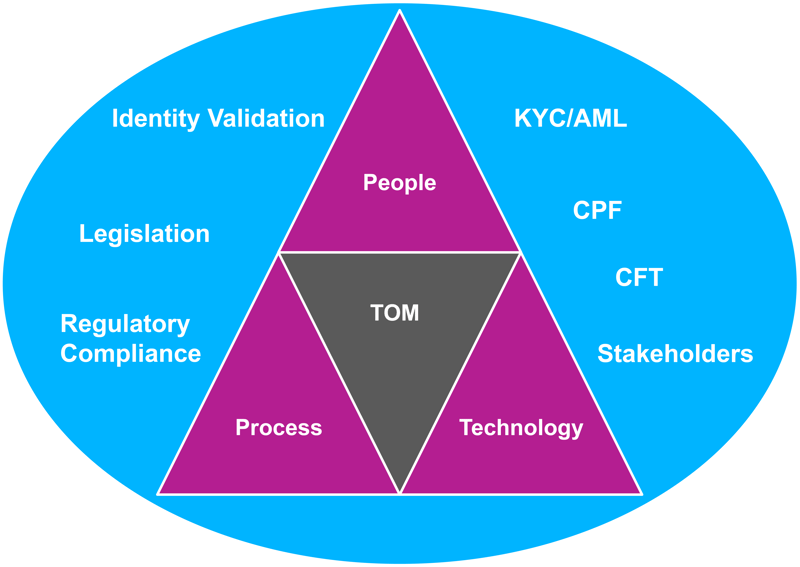Registry systems have changed little over the decades, despite being the consistent and largest data management stores of governments globally. The ever-increasing relevance of these registers, the demand for their services and their omnipresence in registry-related public services has not led to the changes we have witnessed in the wider societal service industry. Statutory registers appear shackled to the same operating model that served them when they were paper processing factories. Their current operating models, despite their investment in technology, still do not serve the wider spectrum of stakeholders that demand more where the old normal does work anymore.
Acknowledging the necessity for advancements, a change in perspective, and a comprehensive reevaluation, authors Bill Clarke, John Murray, and Justin Hygate have penned 'Registers the New Frontier: A Proposal for the Development of a New Target Operating Model for Registers.'
However, the Target Operating Model (TOM) represents a significant departure from the COM. Rather than patching up an old system, the TOM presents a reimagined framework that aligns with future demands, making our registry system more efficient, customer-centric, and secure.
Deriving our Target Operating Model

Strategic Objectives: TOM serves as the north star for registry transformation. Its core objectives are to enhance the efficiency and accuracy of registry services, elevate customer satisfaction, and bolster data security and privacy measures.
Operating Model Components: The strategic objectives underpin the key components of the TOM. Process improvement lies at its core, streamlining services and creating clear guidelines for manual interventions. The TOM also strongly emphasises customer service and support, introducing dedicated teams and knowledge bases to handle inquiries more effectively. Data security and privacy, too, get a notable boost with the implementation of rigorous data security measures and compliance protocols.
Technology and Infrastructure: Moving to the nuts and bolts of the TOM, it is about investing in cutting-edge systems and tools. This implies adopting modern, user-friendly, and scalable registration systems that can efficiently manage high volumes of data. Moreover, the TOM calls for a robust data management system and the necessary infrastructure to support seamless operations.
People and Culture: The TOM recognises that transformation is as much about people as it is about systems. It calls for skill enhancement, communication, and collaboration among the registry team, fostering an environment conducive to change and continuous learning.
Performance Management: The TOM also underscores the importance of performance tracking. It promotes the establishment of clear metrics and Key Performance Indicators (KPIs) to measure the success of the new operating model and allows for course correction as needed.
Governance and Compliance: Like the sturdy foundation of a house, the TOM rests on robust governance and compliance processes. It ensures data accuracy, security, and relevant regulations and legislation compliance.
But the TOM is not solely about revamping the inner workings of the registry. It also addresses a few crucial external aspects:
Data Integrity: The TOM underscores the importance of data integrity. It puts in place measures to ensure the accuracy and reliability of registry records, protecting the custodian's reputation.
Data Security and Privacy: The TOM prioritises data security and privacy. It implements stringent measures to prevent unauthorised access, balancing transparency and privacy requirements.
Regular Audits: It introduces regular auditing of registry records, ensuring compliance with legislation.
Accessibility: The TOM promotes easy and intuitive access to the registry for government agencies, businesses, and the public, enabling transparency and scrutiny.
Compliance: It ensures strict adherence to all relevant laws and regulations, including data protection and privacy rules.
Transparency and Accountability: It advocates for transparency about the purpose of the register and the use of information.
Stakeholder Education: The TOM focuses on stakeholder education and engagement, ensuring everyone understands the registry's purpose and role.
In a nutshell, the Target Operating Model seeks to bring about a change in thinking in registry practices. It aims to morph our registry systems from outdated and rigid to efficient, flexible, and secure, ushering in a future-ready approach to data management.
To learn more from authors: Bill Clarke (VP of Business Development and Partnerships, Teranet), Justin Hygate (VP Registry Innovation, Foster Moore) and John Murray (VP of European Operations, Foster Moore), click HERE for your free copy of the white paper.


